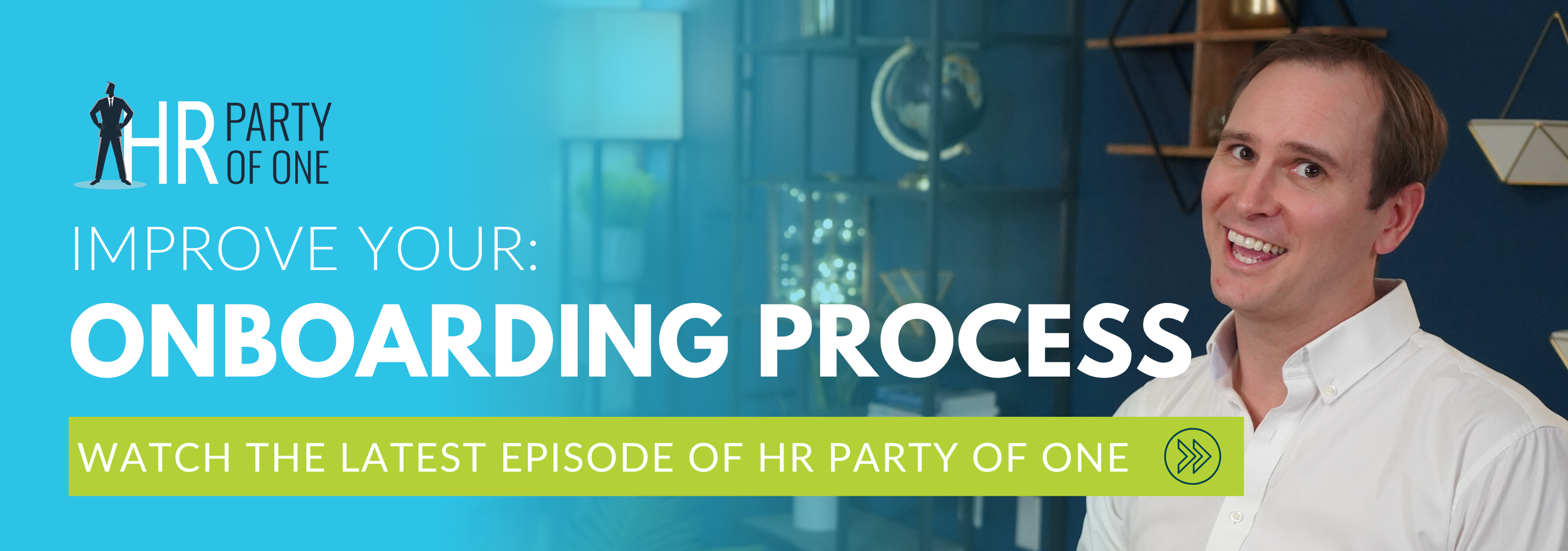
Written by
Drew Gieseke
Drew Gieseke is an aPHR®-certified marketing professional who writes about HR, compliance, and healthcare solutions.
Employee Offboarding Best Practices for Small Employers

What is Offboarding and Why is it Important?
Offboarding is the process of permanently separating an employee from the company either voluntarily or involuntarily. It’s the inverse of onboarding, where instead of prepping a new hire to join the organization, HR and managers are prepping an employee to depart.
The offboarding process consists of several different components. It’s common for employees to transfer job responsibilities and wrap up final projects if time allows—especially if they’re retiring, relocating to another city, or putting in their two weeks notice. Other offboarding steps often include:
- Gathering information for future employees
- Collecting technology devices
- Employment forms
- COBRA compliance
With a strategic approach to offboarding in place, organizations can easily pass off job responsibilities and quickly fill open positions with the right candidates. The result? Better retention and lower turnover in the long run.
Why is Offboarding Difficult for Many Small Businesses?
For most employers, offboarding is scattershot. Sometimes, an employee departs so quickly that the organization only has enough time to cover the offboarding basics, like technology and building access.
The problem? If an employer doesn’t have a standardized offboarding approach in place, they can miss out on incredibly important steps that create headaches for the team down the road. As a result, teams ...
- Play catchup to fill the empty position
- Take up too much extra workload
- Struggle to stay ahead of the proper termination documentation
Offboarding Best Practices and Other Tips to Consider
Use the following tips and best practices when reevaluating and updating your approach to offboarding.
1. Develop and Use a Comprehensive Checklist
Offboarding needs to be standardized because there are certain resignation practices that need to be followed every single time. Offboarding checklists can help managers keep track of every step of the offboarding process during the period of transition.
Include the following categories in your checklist:
- Basic team member details: Including name, email, role, and termination date
- Task: To identify what needs to be completed
- Status: To indicate whether or not you’ve completed the task
- Completion date: To identify when the task was completed
- Comments: To add any additional information about the task
Tasks can include everything from deactivating an employee’s internal social media account to work handover and knowledge transfer. Use this sample spreadsheet to build your own offboarding checklist.
2. Identify Offboarding Roles and Responsibilities
While HR should own the offboarding process, not every task can or should be completed by the HR team. It’s up to HR to assign offboarding tasks as needed. By separating the necessary steps according to the person or department that oversees that task, human resources can keep everyone on the same page during the process.
For example, think about the following tasks:
- Tech Access: Managers may not have access to an employee’s computer login or other logins, so these tasks would likely fall under whoever manages your technology. HR should make sure someone at the organization owns tech access restrictions. This will help avoid employees retaining access to confidential info after they’ve departed.
- Final Checks/Payroll: Similarly, managers probably aren’t responsible for managing payroll and final checks, including deleting the employee after their final paycheck. But, the managers of departing employees will need to follow up with the appropriate departments to ensure that all applicable items in the checklist are completed.
- COBRA Coverage: BerniePortal works with Alpine—a third-party administrator—to alert former employees about access to COBRA continuation coverage. This process is actually completed automatically using the BerniePortal HRIS, but for employers that aren’t already using BerniePortal, this information may need to be communicated separately.
3. Hand Over Work Responsibilities
Managers should be responsible for developing a plan for work handover until the position is filled by a new employee. The sooner a company can facilitate knowledge transfer from the departing teammate to the existing team members, the better.
To help with this, HR should add a component to the company Culture Guide that teaches employees how to resign with grace. In this section, encourage departing teammates to include a list of all of their current tasks and projects to ensure as smooth a transition as possible.
In many cases, managers may want to document certain projects and processes for future reference. This knowledge transfer can be incredibly helpful for teammates to pick up the slack when an employee departs and to teach their replacement how to get certain tasks done.
4. Train Managers How to Offboard
Much like with onboarding, managers need to know how to effectively offboard. This involves HR leading the way by teaching managers the ins and outs of the checklist. Each person who has a direct report should know how the checklist works, what they’re responsible for in the checklist, and how to keep the offboarding process moving forward.
HR should put together a comprehensive manager manual that includes a distinct section dedicated to termination logistics. This resource should walk managers through the step-by-step process of separating from an employee, either voluntarily or involuntarily.
Additionally, this document includes a few anticipated FAQs that employees may ask before they officially depart the company. This includes questions about how the person’s last paycheck is calculated and if they can purchase the tech they used during their time with the company.
5. Send a Wrap-Up Letter
Poor communication during the offboarding process is especially painful for all parties involved. A wrap-up letter alleviates some of these woes.
Wrap-up letters should include information about the person’s final payment—including how it’s calculated and when to expect it. Also consider including details about benefits eligibility, COBRA eligibility, when the person needs to return their tech equipment, and more.
6. Rely on 1:1s Over More Traditional Exit Interviews
Traditionally, the offboarding process involves one final “exit interview” where managers talk to the departing employee about their experience with the company. However, if teams conduct 1:1s, the exit interview isn’t really necessary.
Why? Weekly or biweekly 1:1 meetings give managers—and HR, by extension—a transcript of the employee’s development and experience over time. Using this documented feedback, managers and HR can identify past pain points for the employee that can be used to help inform future performance plans.
7. Use Offboarding Software to Stay Compliant
Each of these offboarding best practices can be easily managed using offboarding software, which is often included in the best human resources information systems (HRIS). With a platform like BerniePortal, employers can stay on top of all related offboarding tasks while still remaining compliant with necessary state and federal labor regulations.
The result? A more streamlined process that makes offboarding easy.

Written by
Drew Gieseke
Drew Gieseke is an aPHR®-certified marketing professional who writes about HR, compliance, and healthcare solutions.
Related Posts
We just wrapped up another phenomenal Weekdays with Bernie (WWB) Conference!
Employees are the heart and soul of an organization, and valuing their opinions can have...
HR parties of one already have an abundance of tasks to keep up with. From hiring to...
The talent search is no longer a skirmish or a battle. It’s a WAR! As a strategic HR...







Submit a Comment